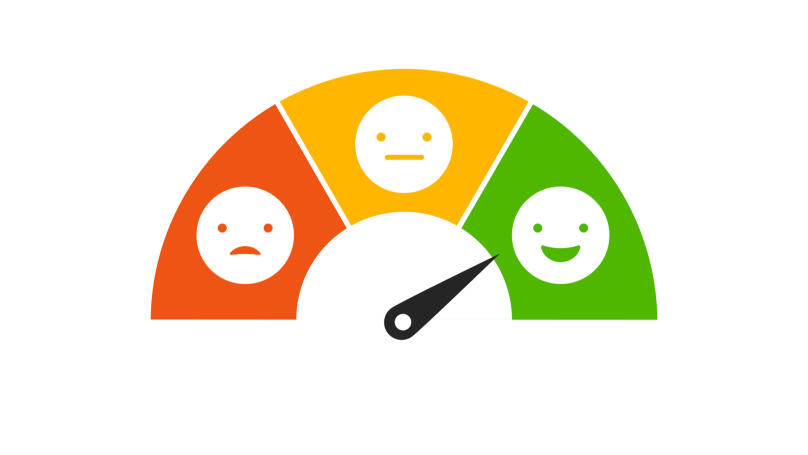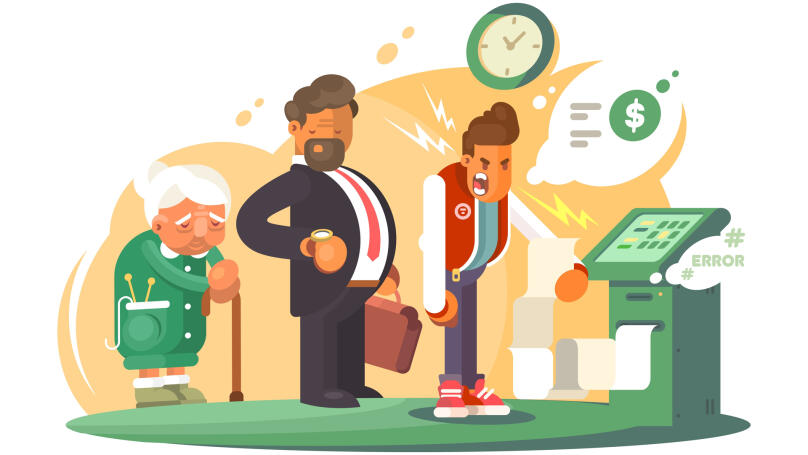Sales objections
What are customer sales objections?

Customer objections are doubts about the worthiness of the purchase. Even if the customer is really interested in buying, they will raise some objections one way or the other. Thus, dealing with objections in sales is a natural stage that indicates that the seller is on the right track and is nearing closing the deal successfully. The objection phase cannot be skipped because:
- An objection is the customer's normal response to having to make a decision (especially in the case of an expensive purchase). It's also a test of the seller's expertise.
- A customer who does not raise any objections is not willing to buy under any circumstances. He will probably leave as soon as the presentation is over. That is why, unless the objection stage comes on its own, it must be provoked.
Reasons for objections

The customer does not always raise a true objection. It may sound veiled, but always implies one of the following reasons:
- The seller has misidentified the customer's need and the customer does not have the right need to buy.
- The customer did not see the benefits of the product that would suit them.
- The customer is not satisfied with the terms (both the terms of purchase and the goods, for example, their characteristics).
- The product does not fit into the customer's budget.
- The customer does not trust the brand.
- The customer does not trust you personally (you were unable to make contact in the first phase of the sales process).
- The customer expects a better offer or terms (e.g. a discount).
- The customer does not make the decision on their own, so they need to discuss the offer with someone else.
- The customer is not ready to buy right now (bad mood, little information, uncomfortable shopping environment, etc.).
Types of objections in sales

What are the main types of sales objections? They can be divided into three categories:
- True and false
These objections differ in the degree of objectivity and reliability of the information. For example, an overpricing claim can be both true (justified) and false (unjustified) in different situations, for different types of goods and different customers.
If the price is too high for all factors, you should tell the customer about the other advantages of the product. That is you are offering the same true information but from the opposite position. In the case of a false claim, you should explain why the objection has no factual basis. Say, by giving an example of the price of similar products or the prices given by your competitors. - Explicit and implicit
Explicit objections are said out loud and open. They are hardly ever a problem as the salesperson immediately identifies them and knows what to do. Hidden objections are most often the reason why customers leave. In this case, the objections may sound like "I need more thinking about it" or "I will come back later".
Explicit objections are worked out according to the classical scheme, while implicit ones must be revealed first. This is done by asking clarifying and leading questions during the dialogue with the customer. - Assertions and questions
These objections differ only in the form they are expressed in. If an objection sounds like a question, it is easier for the seller to react and to bring a counterargument. In the case of an assertion, the buyer sounds more aggressive and generally shows a firmer position. However, there is no significant difference between them in terms of how to deal with them. The seller responds to them both in the same way.
Overcoming objections in sales

Overcoming sales objections, also known as "overcoming customer objections," is the salesperson's activity in resolving a customer's doubts and removing their conscious and unconscious barriers to closing a deal.
How do I deal with customer sales objections? The same algorithm is always applied to deal with objections (including those raised during a phone call). This algorithm always consists of the following steps:
- Taking note of the objections. It is necessary to listen to all the objections of the customer. Do not interrupt and let the customer express all their emotions and thoughts. Do not rush them or try to anticipate possible answers.
- Understanding the objection. The seller should not immediately rush into a dispute. It is important to let the customer know that you understand their position and, if you were them, would also have the same doubts. Here, you need to show empathy. To solve an objection, first, you must understand it and try it on yourself.
- Starting a dialogue. An objection is always a specific issue. You need to discuss all the customer doubts with the customer and think about what can be done to resolve the issue. Let the customer offer a way out of the situation - who better knows how to solve his objection than the client.
- Counterargumenting. When the customer's true pain becomes clear, the seller's task is to eliminate it with an accurate and precise counterargument. The salesperson should not give answers to the customer sales objections before this stage.
- Closing the deal. You should now check if the objection is closed. To do this, ask the customer to move on to the purchase. If they still do not agree, move on to the next objection (normally, there are more than one). The seller must work through each of the objections, each time starting from the first step.
Handling objections in sales: supporting techniques

You can use the following universal scripts to handle objections:
- Mitigating objections with the "but" construction. For example: "Yes, the price is high, but it is better to buy a product that will serve you for years than one that will have to be repaired every six months for extra pay."
- Comparing offers. For example: "You can buy this product with low fuel consumption and wide functionality. Or you can consider buying this product. You will have the one with the amount of fuel enough for one use and limited functionality…"
- Reducing the issue to nothing. For example: "Yes, the price is significant, but compared to the sum this problem may cost you, if you don't solve it now, it's little money."
- The right to choose. Example: "What arguments can convince you that you are making the right decision? Or, "What do you think the product lacks to be perfect for you?"
- Partial empathy-based consent. This technique is based on the development of the customer's mind, on its discussion in a sharply positive way. For example: "Yes, I accept that it is expensive, and at the same time it guarantees quality and high post-sales service."























